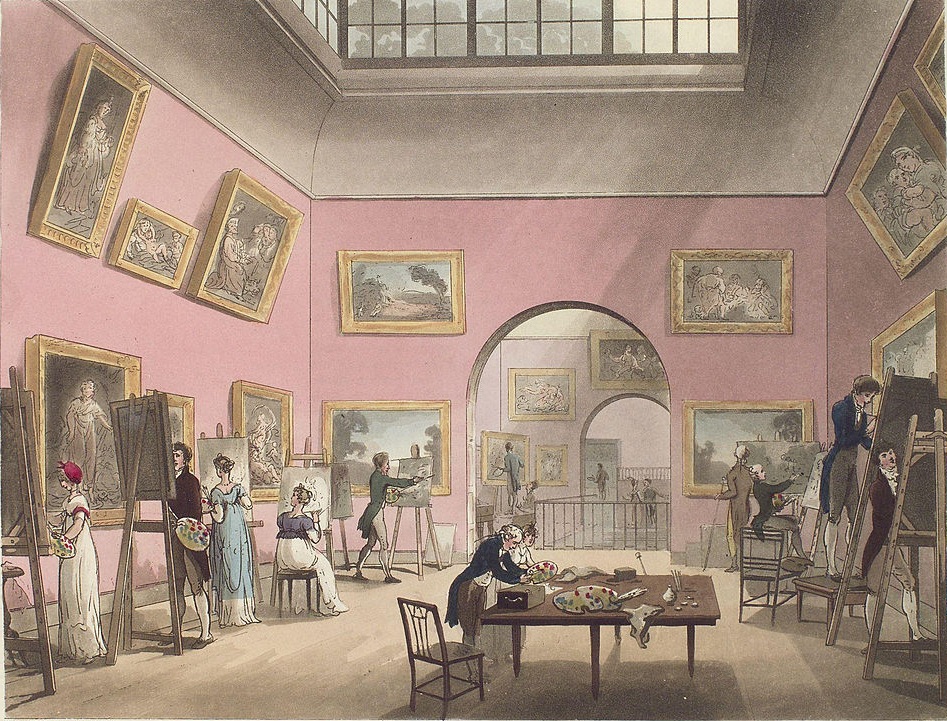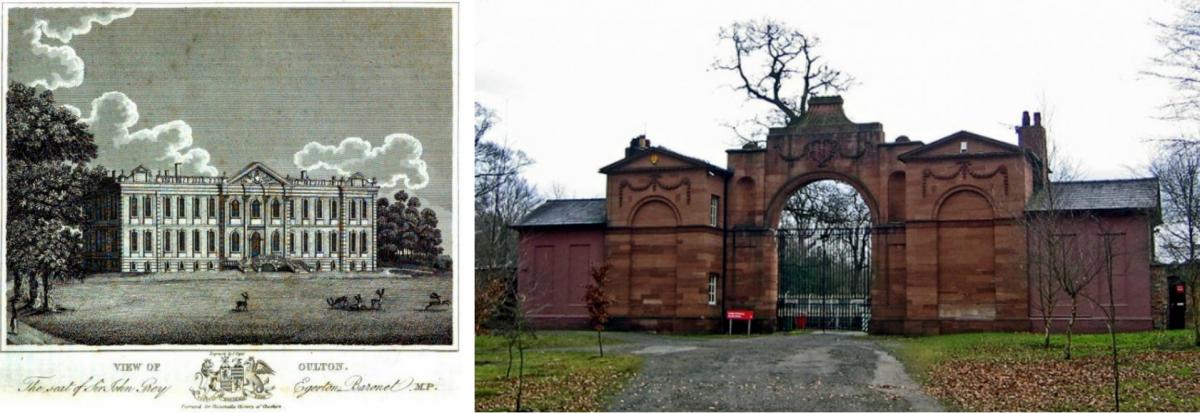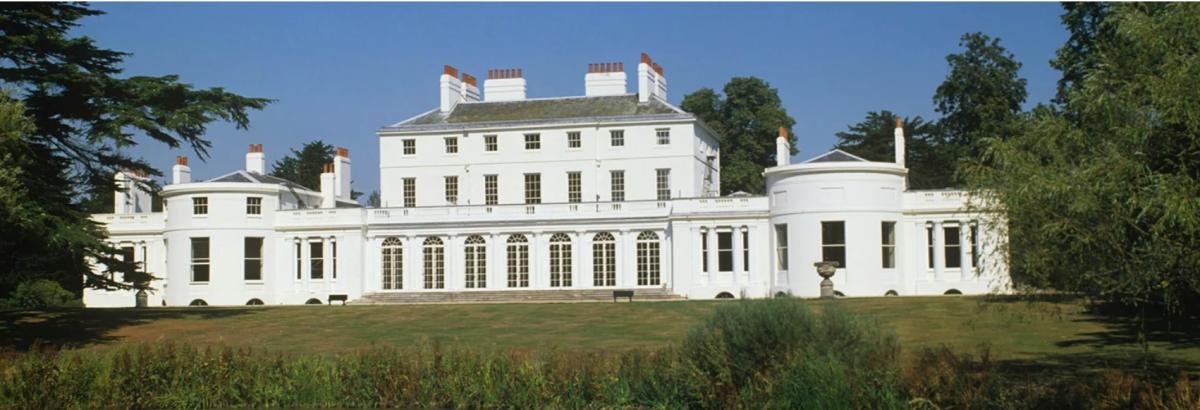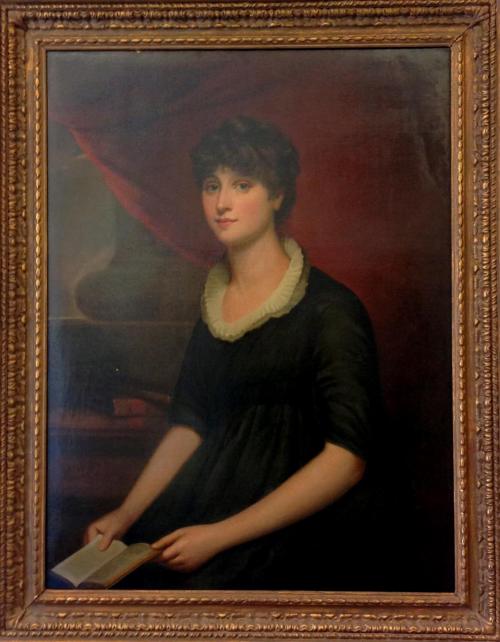Meet Lady Maria Egerton
In November 2017 the Library received a handsome bequest from member Eve Kingsland: a portrait of a beautiful and aristocratic young woman, Lady Maria Egerton. Lady Maria turns up around the edges of numerous historical sources, but she remains something of a mystery.
Born Maria Scott Jackson, Lady Maria was the daughter and sole heir of Thomas Scott Jackson, one of the Directors of the Bank of England. She presumably grew up at least partly at his home in Bedford Square, then in Middlesex and now part of the London urban area.
In 1795 she married Sir John Egerton, a baronet born in 1766, in Backford, Cheshire. It’s unclear how old Maria was at this time, but some controversy about her age and legal standing required the marriage ceremony to be repeated “by special license” at a London court.
Sir John served in the formal office of Sheriff of Cheshire in the 1790s and was recorded as a major in the Royal Chester Volunteers in 1807, during the Napoleonic wars. In that same year, he was elected to represent Chester in the House of Commons, promising the electors “the best exertions of an honest and indepedent mind.” His politics look somewhat controversial at the time and fairly right-wing by modern standards. He continued in Parliament through 1818, closing his career with a duel against one of his rivals.
In 1814, Sir John reclaimed a distant branch of his family tree to become Sir John Grey-Egerton. He was one of the first governors of the British Institution, a private art-exhibition society in action from 1805 until 1867. He seems to have been a particular patron of artist Daniel Clowes (1774-1829).

Sir John’s estate was Oulton Park in Tarporley, Cheshire, and featured “an elegant and capacious mansion of brick” surrounded by an enclosure of about 320 acres. During the Second World War, Oulton Park served as General Patton’s staging area for the Normandy invasion, and its main house was damaged both by fire in 1926 and by bombs in 1940. Since the 1950s the estate’s been a motor racing track, but its grand entrance lodge, designed by architect Joseph Turner, still stands.

According to diarist Joseph Farington, Lady Maria personally owned, or owned the lease of, Frogmore House in Windsor Home Park. In 1792, the lease was sold to Queen Charlotte, who sought a quiet country place for herself and her unmarried daughters. Today the estate is maintained by the Royal Collection Trust and remains a royal retreat with days open to the public.

Sir John died May 24, 1825. Lady Maria died in August of 1830. The couple had no surviving children.
A guess based on Lady Maria’s clothing in our portrait suggests that she sat for it shortly after the turn of the 19th century. The artist was Sir William Beechey (1753-1839), a notable portrait and landscape painter. A student of the more famous Joshua Reynolds, he was appointed portrait painter to Queen Charlotte in 1793. He was made a knight and a member of the Royal Academy in 1798 after receiving acclaim for a large painting involving King George III and the Prince of Wales. Many of Beechey’s works are included in the Frick Collection’s Art Reference Library FRESCO database, but not the portrait of Lady Maria. The Oxford Companion to Western Art is unimpressed by Beechey, calling him “an uninspired but conscientious painter noted for his craftsmanship and the accuracy of his likenesses rather than originality.”
There are the outlines of our portrait-sitter’s existence. But other than her loveliness—accurately portrayed, if we believe the Oxford Companion—it gives us very little of the woman herself. Was she kindly? Haughty? A churchgoer, or a partier, or both? Did she regret the handoff of Frogmore House, or was it a relief to have the old pile off her to-do list? Did she pine after babies, or did she prefer to be left alone with books like the one she’s holding in the portrait?
Lady Maria’s personality and inner life may be lost to history. Our collections are strong, however, on books about her era and its women, aristocratic and not. If your interest is piqued, you might try one of these varied titles:
- Amanda Foreman | Georgiana, Duchess of Devonshire
- Janet Gleeson | An Aristocratic Affair: The Life of Georgiana’s Sister, Harriet Spencer, Countess of Bessborough
- Stephen Taylor | Defiance: The Extraordinary Life of Lady Anne Barnard
- Rosemary Baird | Mistress of the House: Great Ladies and Grand Houses, 1670-1830
- Stella Tillyard | Aristocrats: Caroline, Emily, Louisa, and Sarah Lennox, 1740-1832
- Betsy Aikin-Sneath Rodgers | Georgian Chronicle: Mrs. Barbauld & Her Family
- Jenny Uglow | In These Times: Living in Britain Through Napoleon’s Wars, 1793-1815
- Boyd Hilton | A Mad, Bad, and Dangerous People? England, 1783-1846
And if you’d like an audience with Lady Maria, feel free to drop by the Head Librarian’s office on the third floor.
Thanks to Carolyn Waters for much of this research.

